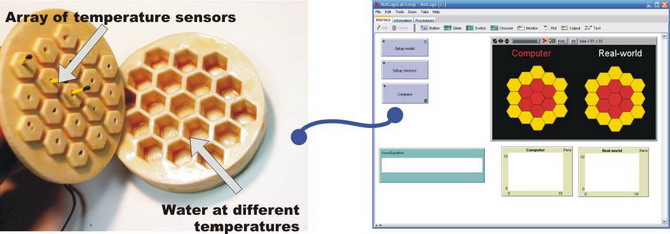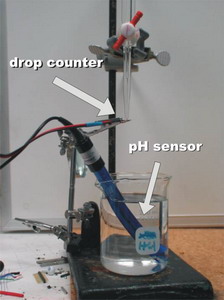NetLogoLab
NetLogoLab Models
Home, Papers, Models, Rationale
Heat Tansfer

Computer model

Simulates heat transfer in a haxagonal grid using user-defined algorithms
Physical model
A grid of 19 hexagonal cells and a cap with holes for temperature sensors. The cells should be filled with any liquid, but the center cell has to be filled with hot or cold liquid. Heat will diffuse to the neighboring cells and the sensors will detect the temperature change. The information is displayed in the NetLogo model and users can see the two models evolving at the same time.
Goal
Comparison between a computer model of heat transfer, which students themselves code, and a physical apparattus that mimics the shape of the model's grid. By comparing their computer model with the information from the physical model, students can change, debug and refine their model.
Gas Laws

Computer model
Simulates gas molecules in a container.
Physical model
A plastic syringe with temperature, volume (strech) and pressure sensors. The information is displayed in the NetLogo model and users can see the impact in temperature of varying volume and pressure.
Goal
Comparison between an multi-agent-based computer model of gases, which students themselves code, and a physical apparatus that the same gas container of the computer model. By comparing their computer model with the information from the sensors, students can change, debug and refine their model.

Acid-Base Reaction
Computer model
Simulates an acid-base reaction and measures its pH.
Physical model
A stand, a pipette and a beaker with a drop-counter and a pH sensor. The information is displayed in the NetLogo model and users can see the impact in of adding drops of base in the pH.
Goal
Comparison between a multi-agent-based computer model of acid-base reactions, which students themselves can modify, and a physical apparatus with a pH meter and a drop-counter that monitor the amount of acid-base in the beaker and its pH. By comparing their computer model with the information from the sensors, students can change, debug and refine their model.